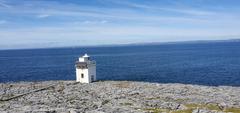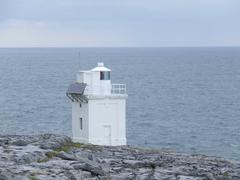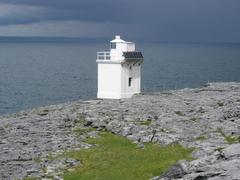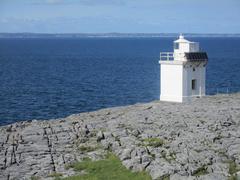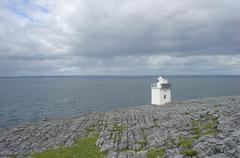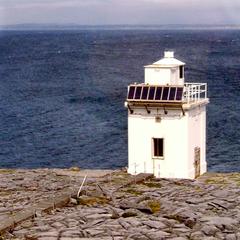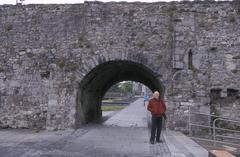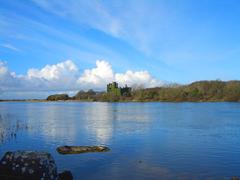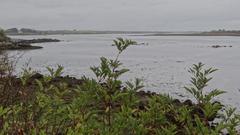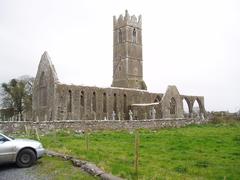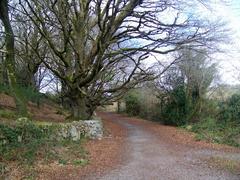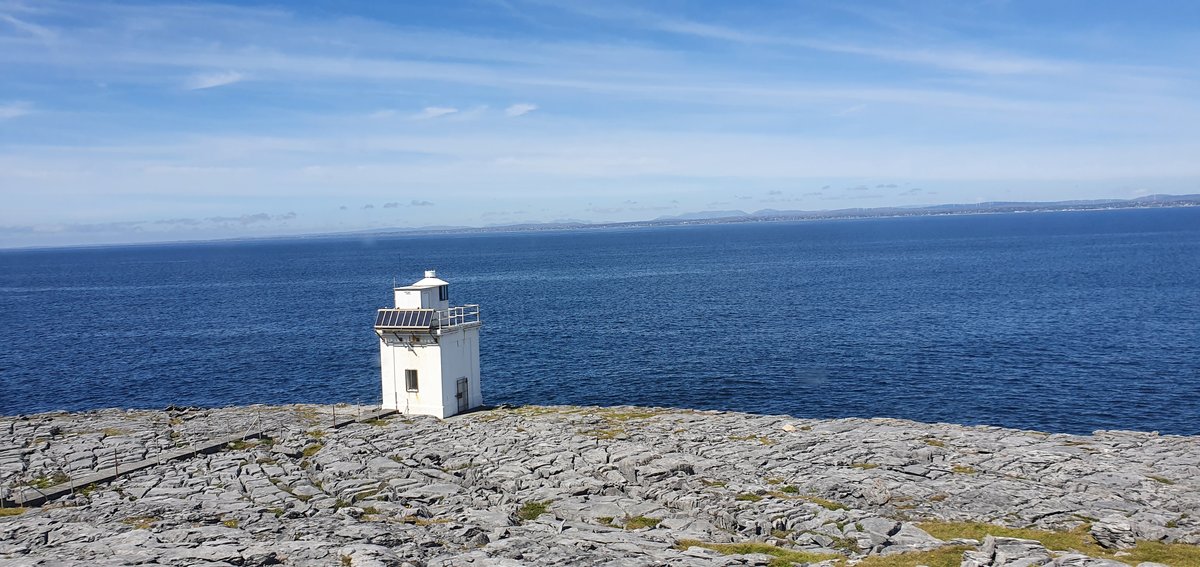
Comprehensive Guide to Visiting Black Head, Galway, Ireland
Date: 19/07/2024
Introduction
Black Head, known in Irish as ‘Ceann Boirne,’ is a captivating headland located in the Burren region of County Clare, Ireland. This unique destination offers a stunning blend of natural beauty, geological significance, and rich cultural history, making it a must-visit for tourists in Galway. The Burren, where Black Head is situated, is renowned for its distinctive karst landscape characterized by limestone pavements, deep fissures known as ‘grikes,’ and isolated rocks called ‘clints’ (Geological Survey Ireland). This striking terrain was formed during the Carboniferous period, approximately 350 million years ago, when the area was submerged under a shallow tropical sea, leading to the deposition of limestone sediments.
The historical importance of Black Head is equally compelling. The region has been inhabited since the Neolithic period (circa 4000-2500 BCE), with numerous megalithic tombs, stone forts, and ancient settlements dotting the landscape. One notable site is the Poulnabrone Dolmen, a portal tomb dating back to around 3000 BCE, which underscores the area’s significance to early human settlers (Heritage Ireland). As history unfolded, Black Head and the surrounding Burren region saw the influence of the Gaelic kingdom of Thomond, the arrival of the Normans in the 12th century, and the powerful O’Brien clan’s efforts to preserve Gaelic traditions (Clare County Library). The area also endured the hardships of the Great Famine in the mid-19th century, leaving behind poignant reminders of this tragic chapter in Irish history (National Famine Museum).
In recent times, the Burren has gained recognition for its ecological and cultural significance, leading to the establishment of the Burren National Park and the Burren and Cliffs of Moher UNESCO Global Geopark. These initiatives aim to protect the region’s diverse flora, fauna, and historical sites (Burren and Cliffs of Moher Geopark). As a popular tourist destination, Black Head offers visitors the chance to explore its rugged landscape, ancient monuments, and breathtaking views of Galway Bay. Whether you’re a history enthusiast, a geology buff, or simply in search of stunning vistas, Black Head promises an unforgettable experience.
Table of Contents
- Introduction
- Geological Formation and Early History
- Prehistoric and Early Human Settlement
- Medieval Period and Norman Influence
- The O’Brien Clan and the Burren
- The Great Famine and Emigration
- Modern Era and Conservation Efforts
- Cultural Significance and Tourism
- Visitor Information
- Notable Historical Events and Figures
- Archaeological Discoveries
- Conclusion
- FAQ
- Call to Action
Geological Formation and Early History
Black Head is renowned for its unique karst landscape, characterized by limestone pavements with deep fissures known as “grikes” and isolated rocks called “clints.” The geological formation of Black Head dates back to the Carboniferous period, approximately 350 million years ago. During this time, the area was submerged under a shallow tropical sea, leading to the deposition of limestone sediments that would eventually form the Burren’s distinctive terrain (Geological Survey Ireland).
Prehistoric and Early Human Settlement
Evidence of human activity in the Burren dates back to the Neolithic period (circa 4000-2500 BCE). The region is dotted with numerous megalithic tombs, stone forts, and ancient settlements, indicating a long history of human habitation. One of the most significant archaeological sites near Black Head is the Poulnabrone Dolmen, a portal tomb that dates back to around 3000 BCE. This structure, along with other megalithic monuments, suggests that the area was of considerable importance to early settlers (Heritage Ireland).
Medieval Period and Norman Influence
During the early medieval period, the Burren was part of the Gaelic kingdom of Thomond. The region was known for its fertile soil and strategic location, which made it a valuable asset for local chieftains. The arrival of the Normans in the 12th century brought significant changes to the area. The Normans established several castles and fortifications, including the nearby Leamaneh Castle, which played a crucial role in the region’s defense and administration (Clare County Library).
The O’Brien Clan and the Burren
The O’Brien clan, one of the most powerful Gaelic families in Ireland, held significant influence over the Burren during the medieval period. They were known for their patronage of the arts and their efforts to maintain Gaelic traditions in the face of Norman and later English encroachment. The O’Briens built several castles and tower houses in the region, including the well-preserved Dunguaire Castle, which overlooks Galway Bay and offers stunning views of Black Head (Discover Ireland).
The Great Famine and Emigration
The Great Famine (1845-1852) had a profound impact on the Burren and its inhabitants. The failure of the potato crop, which was the staple food for the majority of the population, led to widespread starvation and disease. Many families were forced to abandon their homes and emigrate in search of a better life. The population of the Burren, including the area around Black Head, declined dramatically during this period. Today, the remnants of abandoned famine cottages and deserted villages serve as poignant reminders of this tragic chapter in Irish history (National Famine Museum).
Modern Era and Conservation Efforts
In the 20th century, the Burren, including Black Head, gained recognition for its unique ecological and cultural significance. Efforts to preserve the region’s natural beauty and historical heritage have led to the establishment of the Burren National Park and the Burren and Cliffs of Moher UNESCO Global Geopark. These initiatives aim to protect the area’s diverse flora and fauna, as well as its rich archaeological and historical sites (Burren and Cliffs of Moher Geopark).
Cultural Significance and Tourism
Black Head and the surrounding Burren region have become popular destinations for tourists seeking to explore Ireland’s natural and cultural heritage. The area’s rugged landscape, dotted with ancient monuments and offering breathtaking views of Galway Bay, attracts hikers, photographers, and history enthusiasts alike. The Burren Way, a long-distance walking trail, passes through Black Head, providing visitors with an opportunity to experience the region’s unique geology and historical landmarks up close (Burren Way).
Visitor Information
Visiting Hours
Black Head is accessible year-round. However, it is recommended to visit during daylight hours to fully appreciate the landscape and historical sites.
Tickets
There is no admission fee for visiting Black Head. However, some nearby attractions such as Dunguaire Castle may have entry fees.
Travel Tips
Wear sturdy hiking shoes, bring water, and be prepared for changing weather conditions. Guided tours are available and can provide deeper insights into the area’s history and geology.
Nearby Attractions
Nearby attractions include Dunguaire Castle, Poulnabrone Dolmen, and the Burren National Park.
Accessibility
Some areas of the Burren are rugged and may be challenging for visitors with mobility issues. Check with local visitor centers for accessible routes and facilities.
Notable Historical Events and Figures
Several notable historical events and figures are associated with Black Head and the Burren. The area was a focal point during the Cromwellian conquest of Ireland in the mid-17th century, which led to significant upheaval and displacement of the local population. Additionally, the Burren has inspired numerous writers, poets, and artists, including the famous Irish poet John O’Donohue, whose works often reflect the region’s mystical and timeless qualities (John O’Donohue).
Archaeological Discoveries
Recent archaeological excavations in the Burren have uncovered new insights into the region’s ancient past. Discoveries of Bronze Age artifacts, early Christian sites, and medieval settlements continue to shed light on the lives of the people who once inhabited this rugged landscape. These findings contribute to our understanding of the historical significance of Black Head and its role in the broader context of Irish history (Archaeology Ireland).
Conclusion
The allure of Black Head (Clare) in Galway, Ireland, lies in its captivating blend of natural beauty, historical significance, and cultural richness. From its origins in the Carboniferous period to its importance in prehistoric and medieval times, Black Head offers a unique glimpse into Ireland’s past. Visitors can explore ancient monuments like the Poulnabrone Dolmen and medieval fortifications such as Leamaneh Castle, gaining insights into the lives of early settlers and the region’s strategic importance (Heritage Ireland, Clare County Library). The impact of the Great Famine and subsequent emigration remains evident in the remnants of abandoned cottages and deserted villages, serving as a poignant reminder of this tragic era (National Famine Museum).
In the modern era, conservation efforts have highlighted the ecological and cultural significance of the Burren, with the establishment of the Burren National Park and the Burren and Cliffs of Moher UNESCO Global Geopark. These initiatives ensure the protection and preservation of the area’s unique flora, fauna, and historical sites for future generations (Burren and Cliffs of Moher Geopark). For tourists, Black Head offers a wealth of experiences, from hiking scenic trails and exploring ancient archaeological sites to enjoying the vibrant local culture and cuisine. By following the provided tips and guidelines, visitors can ensure a safe, enjoyable, and enriching experience. As you plan your visit, consider joining guided tours, respecting the natural environment, and engaging with the local community to fully appreciate the wonders of Black Head and the Burren.
FAQ
- What are the opening hours for Black Head? Black Head is accessible year-round, though it is best visited during daylight hours.
- How much do tickets to Black Head cost? There is no admission fee for Black Head itself, but nearby attractions like Dunguaire Castle may have entry fees.
- What should I wear when visiting Black Head? Wear sturdy hiking shoes and be prepared for changing weather conditions.
Call to Action
For more information on visiting Black Head and the Burren, consider downloading the Audiala mobile app, checking out other related posts, or following us on social media for the latest updates and travel tips.
References
- Geological Survey Ireland. (n.d.). Geological Survey Ireland
- Heritage Ireland. (n.d.). Heritage Ireland
- Clare County Library. (n.d.). Clare County Library
- National Famine Museum. (n.d.). National Famine Museum
- Burren and Cliffs of Moher Geopark. (n.d.). Burren and Cliffs of Moher Geopark
